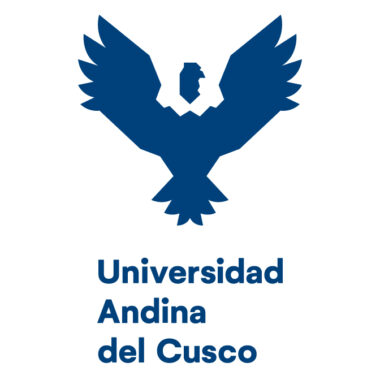Variación de la Huella ecológica de los estudiantes de Ingeniería Ambiental de la Universidad Andina del Cusco durante la pandemia del COVID-19
DOI:
https://doi.org/10.36881/yachay.v9i01.251Keywords:
Key words: Sustainability, variation, ecological footprint, Covid-19 pandemicAbstract
The variation of the ecology footprint per capita (FP) of the students of the professional school of Environmental Engineering of the Universidad Andina del Cusco was determined in two different scenarios: before the pandemic and during the COVID-19 pandemic; For this, a questionnaire used internationally for the determination of the HE of university students was adapted, the quantification was carried out considering four sections: Food, transport, energy and forest resources. The results obtained show a decrease in the HE between the two scenarios of 0.207 hag, the most significant reduction was in the transport section 0.185 hag, followed by the food section 0.022 hag, in the forest section the reduction was minimal 0.002 hag and in the energy section obtained an increase in HE of 0.002 hag. The results of the present study demonstrate in terms of ecological footprint the variation in the consumption habits of university students due to the declaration of a health emergency faced by the country, a variation that translates into a more sustainable lifestyle.
Downloads
References
Carabelli, F. A., Forti, L. L., & Baroli, C. A. (s. f.). La huella ecológica aplicada al análisis de la relación hombre-naturaleza en comunidades de pequeña y mediana escala socioeconómica en Patagonia. 6.
Huella Ecológica en el Perú | SINIA | Sistema Nacional de Información Ambiental. (s. f.). Recuperado 10 de mayo de 2020, de https://sinia.minam.gob.pe/documentos/huella-ecologica-peru
Ibarra-Cisneros, J. M., & Monroy-Ata, A. (2014). Cuestionario para calcular la Huella Ecológica de estudiantes universitarios mexicanos y su aplicación en el Campus Zaragoza de la Universidad Nacional. TIP, 17(2), 147-154. https://doi.org/10.1016/S1405-888X(14)72089-3 DOI: https://doi.org/10.1016/S1405-888X(14)72089-3
Leiva-Mas, J., Rodríguez-Rico, I., & Quintana-Pérez, C. (2011). CÁLCULO DE LA HUELLA ECOLÓGICA DE LA UNIVERSIDAD CENTRAL “MARTA ABREU” DE LAS VILLAS. Tecnología Química, XXXI(1), 47-52.
Martella, M. B., Trumper, E., Bellis, L. M., Renison, D., Giordano, P. F., Bazzano, G., & Gleiser, R. M. (2012). Manual de Ecología. Poblaciones: Introducción a las técnicas para el estudio de las poblaciones silvestres. Reduca (Biología), 5(1), 31.
Raj, S., Goel, S., Sharma, M., & Singh, A. (2012). Ecological footprint score in university students of an Indian city. Journal of Environmental and Occupational Science, 1(1), 23. https://doi.org/10.5455/jeos.20120610031942 DOI: https://doi.org/10.5455/jeos.20120610031942
Suárez, E. A. A., & Guerrero, Y. Q. (2014). PROPUESTA DE UN PLAN DE MANEJO AMBIENTAL (PMA) ENCAMINADO HACIA UNA GESTIÓN SOSTENIBLE: CASO DE ESTUDIO INSTITUTO MIGUEL SÁNCHEZ HINESTROZA (I.M.S.H) [Tesis]. Universidad Industrial de Santander.
Südaş, H. D., & Özeltürkay, E. Y. (2015). Analyzing the Thoughts of Ecological Footprints of University Students: A Preliminary Research on Turkish Students. Procedia - Social and Behavioral Sciences, 175, 176-184. https://doi.org/10.1016/j.sbspro.2015.01.1189 DOI: https://doi.org/10.1016/j.sbspro.2015.01.1189
Tobasura Acuña, I. (2008). HUELLA ECOLÓGICA Y BIOCAPACIDAD: INDICADORES BIOFÍSICOS PARA LA GESTIÓN AMBIENTAL. El caso de Manizales, Colombia. Luna Azul, 26, 18. https://doi.org/10.17151/luaz.2008.26.8 DOI: https://doi.org/10.17151/luaz.2008.26.8
Wackernagel, M. (2001). Nuestra huella ecológica: Reduciendo el impacto humano sobre la Tierra. Lom Ediciones.
Wiedmann, T., & Barrett, J. (2010). A Review of the Ecological Footprint Indicator—Perceptions and Methods. Sustainability, 2(6), 1645-1693. https://doi.org/10.3390/su2061645 DOI: https://doi.org/10.3390/su2061645
Zambrano-Monserrate, M. A., Ruano, M. A., & Sanchez-Alcalde, L. (2020). Indirect effects of COVID-19 on the environment. Science of The Total Environment, 728, 138813. https://doi.org/10.1016/j.scitotenv.2020.138813 DOI: https://doi.org/10.1016/j.scitotenv.2020.138813
Zhao, S., Li, Z., & Li, W. (2005). A modified method of ecological footprint calculation and its application. Ecological Modelling, 185(1), 65-75. https://doi.org/10.1016/j.ecolmodel.2004.11.016 DOI: https://doi.org/10.1016/j.ecolmodel.2004.11.016
Additional Files
Published
How to Cite
Issue
Section
License
You are free to:
- Share — copy and redistribute the material in any medium or format
- Adapt — remix, transform, and build upon the material
- The licensor cannot revoke these freedoms as long as you follow the license terms.
Under the following terms:
-
Attribution — You must give appropriate credit, provide a link to the license, and indicate if changes were made. You may do so in any reasonable manner, but not in any way that suggests the licensor endorses you or your use.













